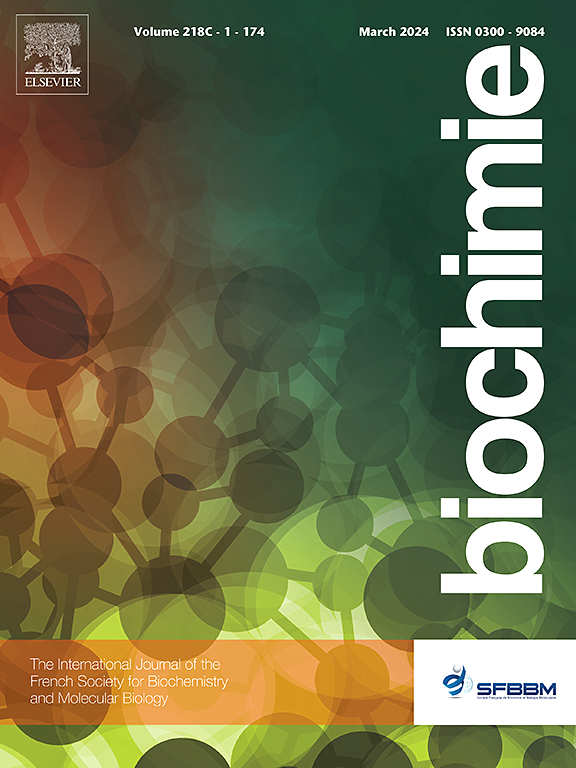The effect of extremolytes ectoine and hydroxyectoine on the heat-induced protein aggregation: The case of growth hormone
IF 3
3区 生物学
Q2 BIOCHEMISTRY & MOLECULAR BIOLOGY
引用次数: 0
Abstract
The extremolytes ectoine and hydroxyectoine are osmolytes found in extremophilic microorganisms. They are stabilisers of proteins and other macromolecules, including DNA and lipids. The aim of the study was to investigate the effect of the additives on the heat-induced aggregation of mink growth hormone as a model protein. The first-order rate constants of protein aggregation were determined at 60 °C depending on the additive concentration and pH of the solution. The onset temperature of aggregation was also recorded using a circular dichroism spectropolarimeter. The study showed that the effect of the additives depended on the pH of the solution. The first-order rate constants of aggregation were lower when the protein molecule had a negative charge. The effect also depended on the structure of the extremolyte itself. When the protein molecule was positively charged, hydroxyectoine destabilised the mink growth hormone molecule and promoted the aggregation. The different effects of the additives were determined by the different interactions with the protein molecules, as shown by circular dichroism measurements and previously by fluorescence spectroscopy. Therefore, when using ectoine or hydroxyectoine for protein formulation, the effect of the additive should be carefully analysed for each protein individually.
极性溶解物埃克托因和羟基埃克托因对热诱导蛋白质聚集的影响:以生长激素为例
嗜极微生物中的极性溶解物ectoine 和 hydroxyectoine 是渗透溶解物。它们是蛋白质和其他大分子(包括 DNA 和脂质)的稳定剂。本研究旨在探讨添加剂对作为模型蛋白质的水貂生长激素受热诱导聚集的影响。根据添加剂的浓度和溶液的 pH 值,测定了 60 °C 时蛋白质聚集的一阶速率常数。此外,还使用圆二色性分光光度计记录了聚集的起始温度。研究表明,添加剂的效果取决于溶液的 pH 值。当蛋白质分子带负电荷时,聚集的一阶速率常数较低。这种影响还取决于极溶解物本身的结构。当蛋白质分子带正电荷时,羟基环氧乙烷会破坏水貂生长激素分子的稳定性并促进聚集。添加剂的不同作用是由其与蛋白质分子的不同相互作用决定的,圆二色性测量和之前的荧光光谱法都证明了这一点。因此,在使用埃克托因或羟基埃克托因配制蛋白质时,应仔细分析添加剂对每种蛋白质的影响。
本文章由计算机程序翻译,如有差异,请以英文原文为准。
求助全文
约1分钟内获得全文
求助全文
来源期刊

Biochimie
生物-生化与分子生物学
CiteScore
7.20
自引率
2.60%
发文量
219
审稿时长
40 days
期刊介绍:
Biochimie publishes original research articles, short communications, review articles, graphical reviews, mini-reviews, and hypotheses in the broad areas of biology, including biochemistry, enzymology, molecular and cell biology, metabolic regulation, genetics, immunology, microbiology, structural biology, genomics, proteomics, and molecular mechanisms of disease. Biochimie publishes exclusively in English.
Articles are subject to peer review, and must satisfy the requirements of originality, high scientific integrity and general interest to a broad range of readers. Submissions that are judged to be of sound scientific and technical quality but do not fully satisfy the requirements for publication in Biochimie may benefit from a transfer service to a more suitable journal within the same subject area.
 求助内容:
求助内容: 应助结果提醒方式:
应助结果提醒方式:


